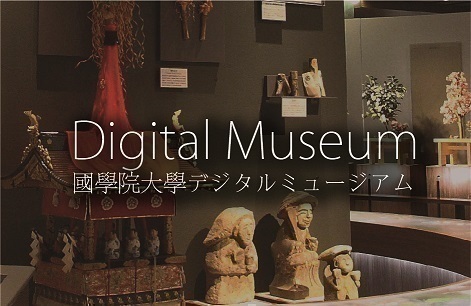- トップ
- Encyclopedia of Shinto
- Saijin
Encyclopedia of Shinto
| Main Menu: | |
| Links: |
詳細表示 (Complete Article)
| カテゴリー1: | 2. Kami (Deities) |
|---|---|
| カテゴリー2: | Concepts of Kami |
| Title | Saijin |
| Text | A collective term referring to all the kami worshiped at a specific shrine or locale. Since it is generally believed that the objects of worship (shintai) in early Shinto were features of, or objects taken from the natural environment (mountains, rivers, ocean, rocks, etc.), the kami at most such locales lacked personalizing names apart from the name of the place where they were found. In the earliest classics such as Kojiki, Nihongi, fudoki, and Man'yōshū, only a few shrines, such as those at Ise, Sumiyoshi, and Munakata, were dedicated to specifically named kami. The objects of worship at the vast majority of shrines, however, were merely called the "kami of such-and-such place (or shrine)." The general practice of referring to kami by the name of their locale or shrine continued until the early tenth century, as reflected in the "Register of the Names of kami" (Jinmyōchō) found within Engishiki. Such kami were originally both nature deities and the deities of specific geographical locales (jinushigami) or clans (ujigami). From around the tenth century, however, kami evolved into deities possessing concrete functions and jurisdictions beyond their earlier characteristics, leading to cults of so-called hayarigami—-deities believed to have some miraculous power and which became the focus of ardent popularity for brief periods of time—and to the propitiatory worship of "vengeful spirits" known as onryōshin (see goryō). At the same time, kami that had earlier been known only by reference to a place name or the name of a shrine began to be referred to by the names of prominent kami appearing in the classic myths, and to take on more anthropomorphic features. Such kami typically were given honorific suffixes such as "mikoto, hiko (male), hime (female), and nushi (master). These kami were frequently treated as ancestral tutelaries (sojin) and given concrete characteristics and functions. Such factors were taken into consideration when selecting the most suitable tutelary to be enshrined in a given locale, with the result that kami of powerful shrines in the politically central region of Kyoto were frequently apportioned and installed at small local shrines (see kanjō), resulting in the dissemination of kami from central to outlying areas. This trend grew stronger with the advance of Shinto classical studies in the medieval and early modern periods. Particularly following the Meiji Restoration (1867), the kami at shrines throughout the country were newly surveyed and designated; deities of powerful central shrines were installed as the main objects of worship in some cases, while in others, their worship was merely merged with that of earlier kami. Various methods are used to classify objects of worship; one of the most common categorization schemes is presented below, together with examples of kami included in the various categories. Further, some kami may fall into multiple categories, depending on their origin and character. [1] Nature kami (1) Meteorological phenomena as kami Amaterasu ōmikami (sun); Tsukuyomi no kami (moon); (2) Natural phenomena as kami Haniyamahime no kami (earth); Homusubi no kami (fire); Mizuhanome no kami (water); Takaokami no kami (rain) (3) Geological features as kami Ōkuninushi no kami, Ōkunitama no kami (land, country); Ōyamatsumi no kami (mountains); Uwa-, Naka-, and Soko-zutsunoo no kami (ocean) (4) Animals and plants as kami Ōyatsuhime no kami (trees); Takaokami (dragon) [2] Kami with strongly anthropomorphic features (1) Imperial ancestors: Amaterasu ōmikami, Izanagi no kami, Izanami no kami, Emperor Ōjin, (2) Ancestral kami of clans (ujigami) Amenokoyane no mikoto (Fujiwara clan); Amenohiwashi no mikoto (Inbe clan) (3) Pioneering kami of the land and local areas: Futsunushi no mikoto, Takemikazuchi no mikoto, Ōkuninushi no kami (4) Kami of culture and learning: Sugawara Michizane, Kakimoto Hitomaro (5) Deified individuals of great service and self-sacrifice: Fujiwara Kamatari, Kusunoki Masashige, Takeda Kionobu, Ninomiya Sontoku (6) Onryō (vengeful spirits): Emperor Sudō, Sugawara Michizane [3] Functionally differentiated kami (1) Kami of cosmic genesis: Amenominakanushi no kami, Takamimusuhi no kami (2) Kami of spiritual power: Takemikazuchi no mikoto, the "rough spirit" (aramitama) of Amaterasu ōmikami (3) Occupational kami: Amenohazuchio no kami (weaving), Ōyamakui no kami (brewing), Tajimamori no mikoto (candy-making), Kotoshironushi no mikoto (fishermen, merchants) (4) Kami of foods: Toyouke ōkami, Ukanomitama no kami -Matsubara Seiji |




